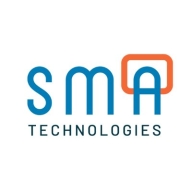

We performed a comparison between Automic Workload Automation and OpCon based on our users’ reviews in five categories. After reading all of the collected data, you can find our conclusion below.
Features: Automic Workload Automation is known for its strength, adaptability, and straightforward setup. It provides management over various operating systems and products, which is advantageous for environments with a blend of outdated and modern technologies. Recent enhancements include web browser accessibility and perspective analytics. OpCon is highly regarded for its versatility, integration abilities, and self-service option. It permits users to automate tasks based on their individual requirements, minimizing mistakes and enhancing productivity. The graphical user interface, database functionality, and on-demand access are also noteworthy attributes.
Automic Workload Automation could improve in out-of-box automation sets, language support, functionality, user interface, web-based edition, file transfer, pricing, and support. OpCon could be enhanced in terms of web-based interface functionality, compatibility, documentation, accessibility, user-side web interface, licensing, support, features, and integration with FICS.
Service and Support: Customers have expressed varying opinions about the customer service for Automic Workload Automation. Some have appreciated the prompt response times and informative knowledge articles, while others have faced challenges in contacting the support team. OpCon's customer service and support have garnered positive feedback, with customers commending the technical support team for their timely assistance and efficient resolutions.
Ease of Deployment: Automic can take anywhere from one to five days to set up, whereas OpCon's setup can be complex but is simplified with the help of SMA consultants. Automic only needs a team of one to three people, while OpCon necessitates close collaboration with SMA and training.
Pricing: Automic Workload Automation has a high setup cost, whereas OpCon is known for being pricey and intricate. Despite this, OpCon is recognized as a cost-effective choice.
ROI: Automic Workload Automation did not present clear ROI figures and was not renewed due to budget reductions. OpCon demonstrated substantial advantages by saving time, minimizing errors, and enhancing productivity, resulting in a strong return on investment.
Comparison Results: OpCon is the preferred choice when compared to Automic Workload Automation. Users appreciate OpCon's flexibility, integration capabilities, self-service feature, and graphical user interface. OpCon allows users to automate tasks according to their specific needs, reducing human error. The customer service and technical support for OpCon are highly regarded, with quick response times and effective solutions.


Automic Automation is employed for migration assistance, digital business automation, integration with platforms, ITIL process workflows, batch processing, disaster recovery, scheduling ERP batch jobs, and automation within finance and telecom sectors.
Businesses implement Automic Automation across on-premises and cloud infrastructures, supporting SAP, mainframes, host systems, and other environments. Valued for its versatility and out-of-the-box integration capabilities, it enhances automation efficiency and reduces operational costs. The platform is known for its robust object-oriented workflow, zero-downtime upgrades, CI/CD pipeline integration, and multi-client architecture. Enhanced stability, scalability, user-friendliness, and compliance are notable benefits.
What are the key features?Automic Automation is widely used in finance and telecom industries, addressing unique challenges and demands. It integrates with Broadcom products and supports SAP environments, ensuring well-rounded automation and operational efficiency. While technical support and vendor assistance could improve, businesses find value in its scheduling, deployment options, and workflow visibility. The industry's capability to manage cloud systems and SaaS deployment helps in mitigating disaster recovery issues and facilitates smoother ITIL process workflows.
OpCon automates batch processing, core system operations, file transfers, and daily processing. Integrated across Unisys, Windows, and cloud systems, OpCon is used in financial institutions, credit unions, and multi-platform environments for job scheduling, report generation, SQL queries, scripting, and FTP processes, handling thousands of jobs daily.
Users value OpCon for comprehensive automation capabilities, particularly the scheduling feature that allows advance planning and streamlined workflows. The self-service functionality enables non-IT staff to manage tasks efficiently. OpCon's integration with core banking systems, robust job management, and error notification system significantly improve operational efficiency. Features like Solution Manager enhance accessibility and control, ensuring process continuity and ease of use.
What are the Key Features of OpCon?
What Benefits Should You Look for in Reviews?
Users find OpCon complex with a steep learning curve. Desired improvements include better separation of environments, enhanced graphical display, finer user authorization, simpler notification and alerts, more templates, increased web functionality, seamless interface, integration tools, online training, smoother scheduling, better reporting, mobile accessibility, smarter self-service, improved mainframe support, and integration with third-party systems. Pricing model and licensing could be more streamlined.
In financial institutions and credit unions, OpCon is implemented to handle thousands of daily jobs, automate internal processes, and integrate workflows across various platforms. It ensures secure file transfers, generates detailed reports, executes SQL queries, and supports seamless third-party integrations.
We monitor all Workload Automation reviews to prevent fraudulent reviews and keep review quality high. We do not post reviews by company employees or direct competitors. We validate each review for authenticity via cross-reference with LinkedIn, and personal follow-up with the reviewer when necessary.